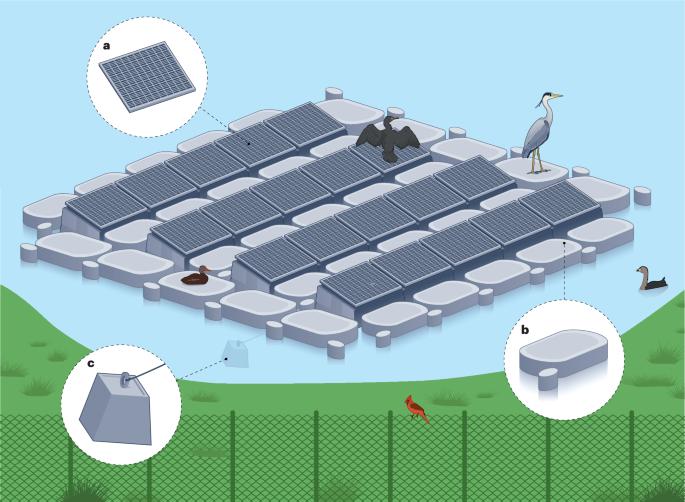Aligning floating photovoltaic solar energy expansion with waterbird conservation
IF 24.1
引用次数: 0
Abstract
Floating photovoltaic solar energy presents an opportunity to mitigate climate change and spare land for other uses, including conservation. However, understanding of the effects of floating photovoltaics (FPVs) on aquatic ecosystems is currently limited. In fact, so far, only a few studies have empirically tested how wildlife responds to FPV deployment and operation. Here we present five key considerations spanning both the direct and indirect effects that FPVs can have on waterbirds and the possible ways waterbirds can interact with and directly affect FPV sites. We examine several aspects of FPVs and their deployment and operation, providing insight into FPV–waterbird dynamics, potential mitigation strategies, and viable concessions for conservation as water surfaces become a more widespread recipient environment for renewable energy. This Perspective leverages waterbirds to establish a conceptual foundation for studying wildlife interactions with floating photovoltaics (FPVs), highlighting five key considerations to guide future research on FPV–wildlife interactions.

将浮动光伏太阳能扩展与水鸟保护结合起来
浮动光伏太阳能提供了一个缓解气候变化和节省土地用于其他用途的机会,包括保护。然而,对浮动光伏(FPVs)对水生生态系统的影响的理解目前是有限的。事实上,到目前为止,只有少数研究对野生动物对FPV部署和操作的反应进行了实证测试。在这里,我们提出了五个关键的考虑因素,包括FPV对水鸟的直接和间接影响,以及水鸟与FPV相互作用并直接影响FPV地点的可能方式。我们研究了fpv及其部署和操作的几个方面,提供了fpv水鸟动力学,潜在的缓解策略以及随着水面成为可再生能源更广泛的接收环境,可行的保护让步的见解。这一视角利用水鸟为研究野生动物与浮动光伏(FPVs)的相互作用建立了概念基础,强调了指导未来FPVs -野生动物相互作用研究的五个关键因素。
本文章由计算机程序翻译,如有差异,请以英文原文为准。
求助全文
约1分钟内获得全文
求助全文

 求助内容:
求助内容: 应助结果提醒方式:
应助结果提醒方式:


